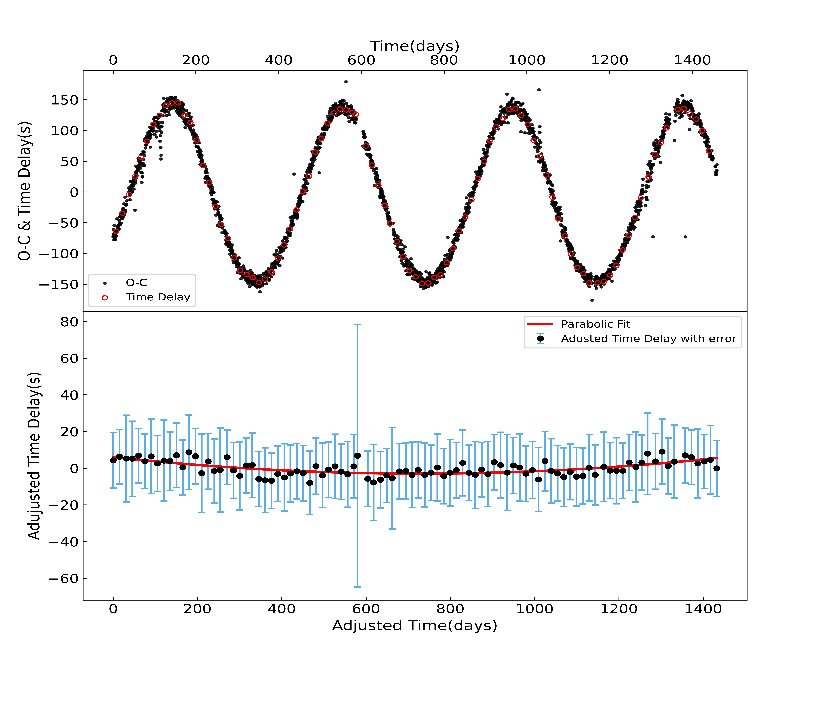

Researchers uncover modulation in pulsation behavior of δ scuti star
Recently, Lixian Shen, a Master’s student from the Xinjiang Astronomical Observatory (XAO) of the Chinese Academy of Sciences (CAS), under supervision of Prof. Ali Esamdin, along with their collaborators, conducted an extensive analysis of the pulsation behavior of the δ Scuti pulsator KIC 10855535, focusing on the modulation of its pulsation frequency and amplitude. The results were published in The Astrophysical Journal .
Using 4 years of continuous long-cadence data from NASA's Kepler space telescope, the researchers investigated the pulsation phase and amplitude modulations. By utilizing the Observation minus Calculation (O-C) method and phase modulation analysis, they computed the time delays caused by the light-travel time effect, which allowed them to model the binary orbit and determine its parameters. These parameters were consistent with previous literature.
Moreover, the researchers incorporated target pixel files (TPFs) from the Transiting Exoplanet Survey Satellite (TESS) to extract light curves from different periods, which matched the phase variations observed with Kepler. After eliminating the effects of Doppler shift, they restored the actual light emission times. Based on this, the researchers further analyzed variations in pulsation amplitude.
A segmented analysis of low-frequency and its harmonics suggested that these changes may be linked to the evolution of surface starspots.
Additionally, the researchers discovered a slight period increase in the pulsation, which may caused by stellar radius expansion due to evolution. This is the first reported case of showing modulation in both phase and amplitude due to stellar evolution. From the inferred rotation frequency of the star, they found that the projected rotational velocity is less than 37(2) km/s.
Overall, the pulsation spectrum of KIC 10855535 is relatively simple, and its low rotational velocity makes it an important sample for studying stellar evolution.

The time delay on fixed pulsation frequency of KIC 10855535 light curve. The upper and lower panels show the results before and after correcting for the light-travel time effect.
Attachment Download: